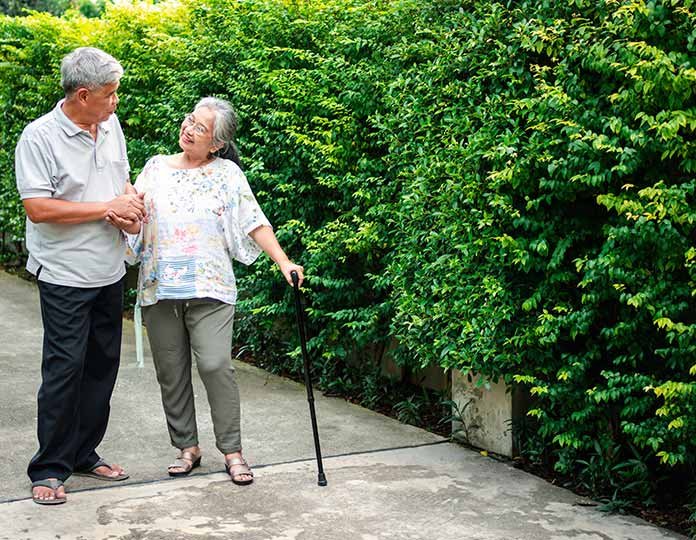Do you also have one of those days where you’re too tired for a workout so you just lace up your favourite pair of sneakers and go for a walk? We already go how big of a game-changer that is. It may seem like a simple activity, but walking can transform your mood, release endorphins and reduce stress hormones. But there’s more to it! Walking doesn’t just get your heart pumping; it also gets your brain firing on all cylinders. And there is a new research conducted by the University of Maryland School of Public Health! It suggests that walking can strengthen the connections within and between three critical brain networks. Interestingly, one of those is associated with Alzheimer’s disease.
What Exactly Does The Study Reveal?
The study, which was just released this month in the Journal for Alzheimer’s Disease Reports, examined the brains and story recall skills of older adults with normal brain function and those who had been diagnosed with mild cognitive impairment, which is a risk factor for Alzheimer’s and a slight decline in mental abilities like memory, reasoning, and judgement.
Getting to the roots of it, we found that the study builds on Smith’s previous research, which demonstrated how walking might reduce cerebral blood flow and enhance brain function in older people with mild cognitive impairment.
Let’s Get To The Process!
A group of 33 individuals, aged between 71 and 85, participated in a supervised treadmill walking program four days a week for a duration of 12 weeks.

To assess the effects of this exercise routine, researchers conducted a pre and post-test where participants were instructed to read a short story and then verbally recall it, providing as much detail as they could remember.
Participants underwent functional magnetic resonance imaging (fMRI), allowing researchers to track information flow changes between and within the three brain networks that govern cognitive function. There are three networks:
- The Default Mode Network (DMN): This is a brain network that activates when we’re not engaged in a specific task. For example, daydreaming or thinking about our grocery list. It’s connected to the hippocampus, one of the first brain regions affected by Alzheimer’s disease.
- Frontoparietal network: Handles choices made while performing a task. It also calls for memory.
- Salience network: Determines what demands attention by keeping track of external stimuli and the world around it. In order to improve performance, it also makes switching between networks easier.
The ability of participants to recall stories significantly improved after 12 weeks of exercise when the tests were retaken. This means exercise can actually cause the brain to change and adapt because of increased brain activity and synchronization.
Stepping Up Against Alzheimer’s!
The impact of this research goes beyond the people who participated in the study. It suggests that if we make walking a regular part of our daily routines, it could have a big impact on public health. This is especially important because Alzheimer’s disease is very common and has a devastating effect. Finding simple and easy ways to help like walking can help in the fight against Alzheimer’s.












Leave feedback about this